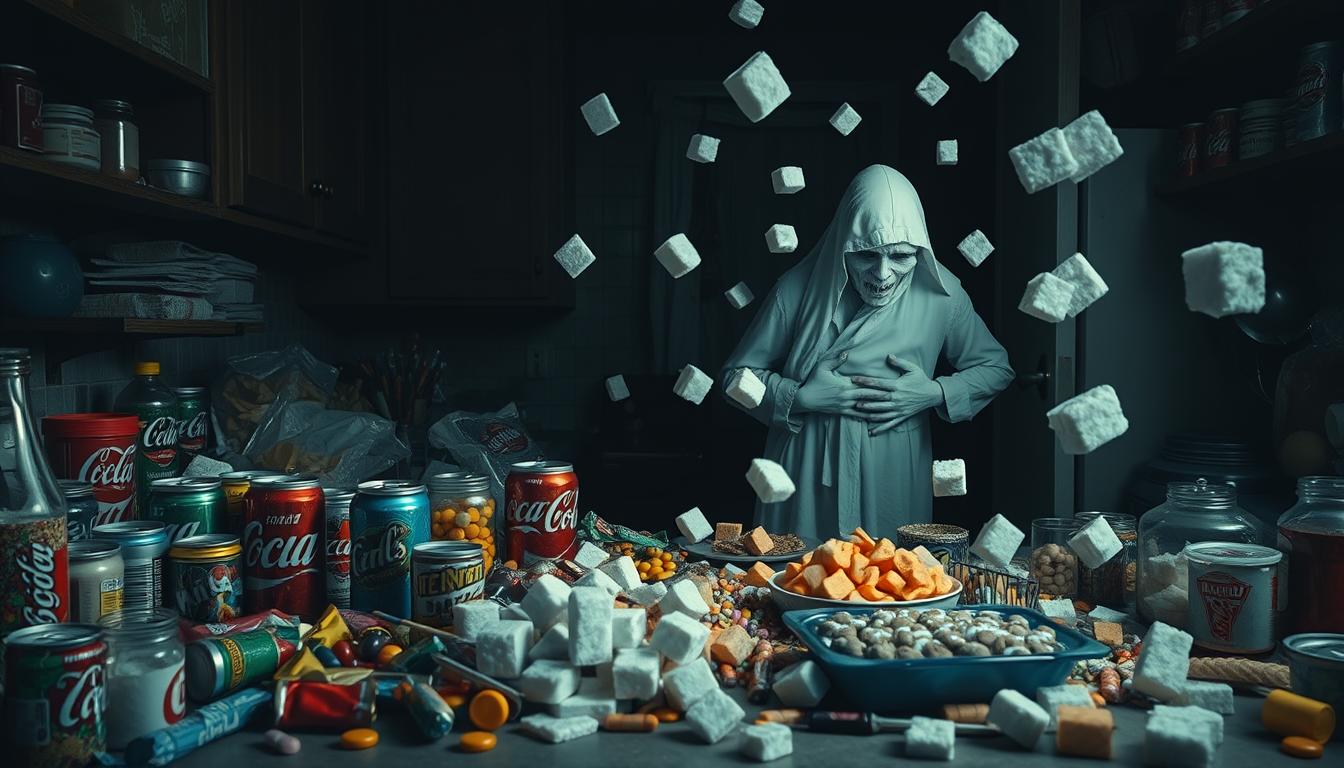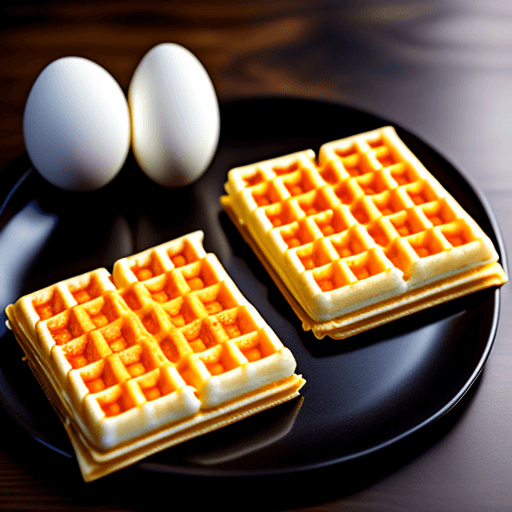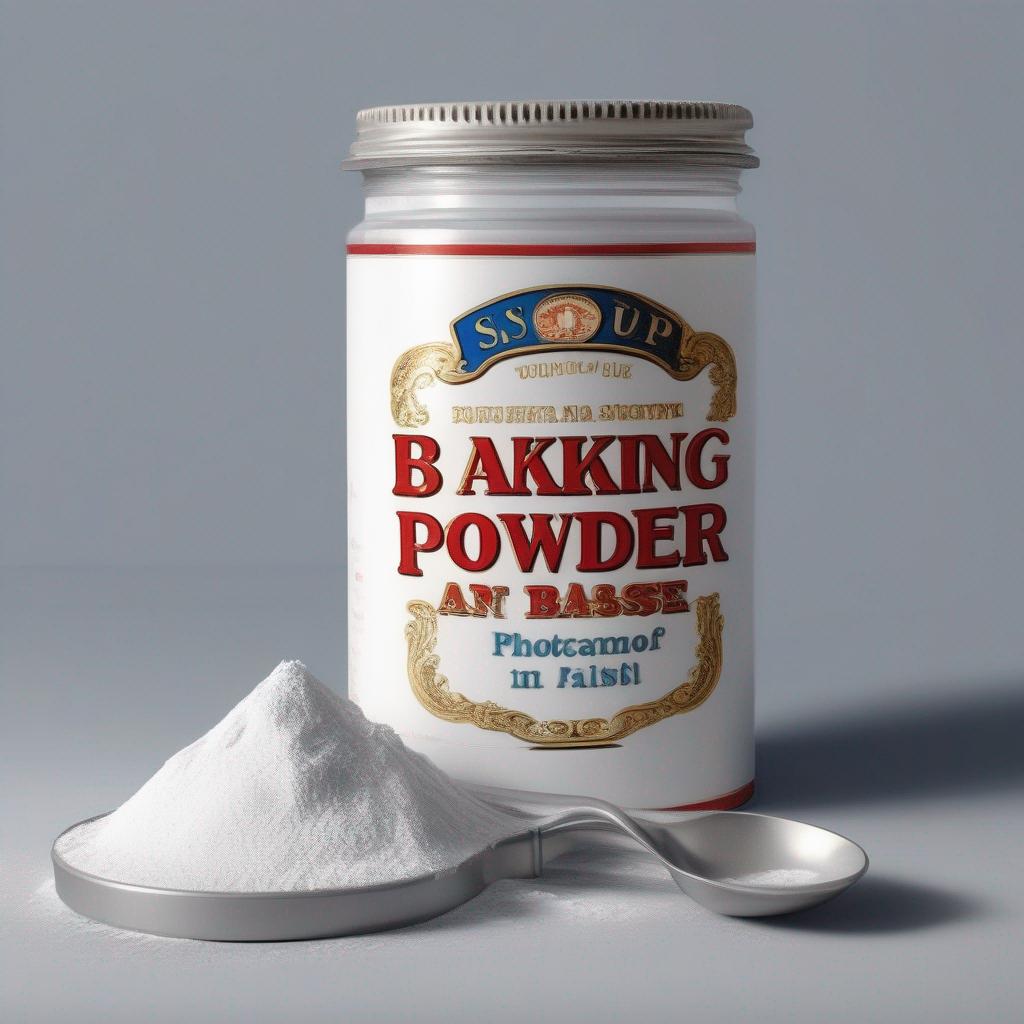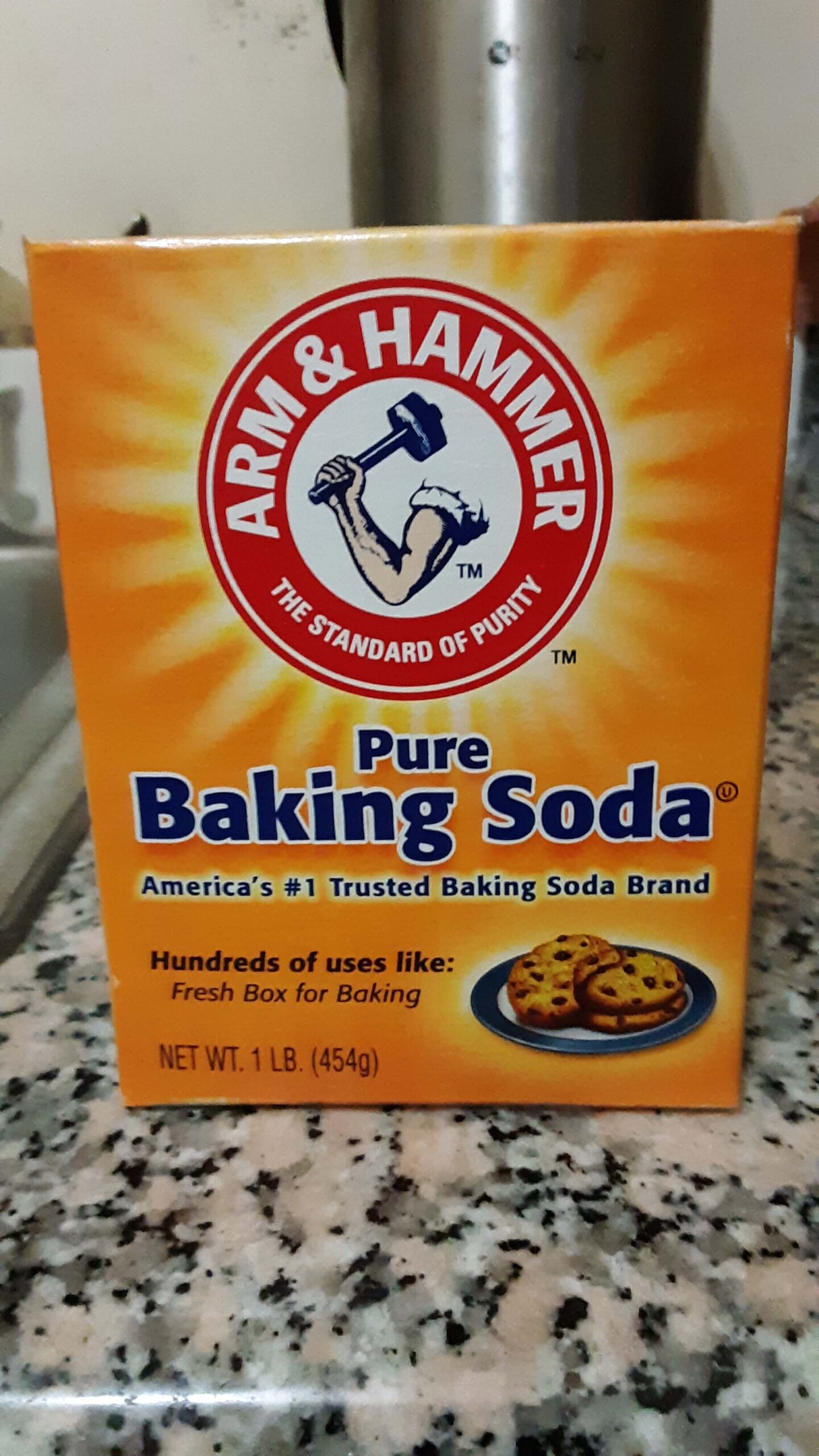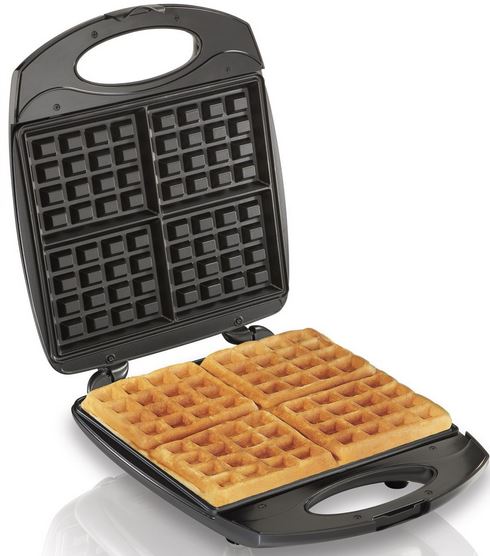One of the key ingredients that make waffles so deliciously fluffy and light is baking powder. But why exactly do we need this leavening agent in our waffle batter?
I’ll look at the chemistry of baking powder and explain how it works to create those crispy, airy pockets that we all love in our waffles.
Baking powder is a dry chemical mixture made up of three main components: sodium bicarbonate (also known as baking soda), an acid salt (such as cream of tartar), and a starch or flour to absorb moisture and prevent clumping.
When combined with liquid, these ingredients react to release carbon dioxide gas, which causes doughs and batters to rise. But how does this process specifically apply to waffles? Let’s find out.
Key Takeaways
- Baking powder is a crucial leavening agent in waffles, helping dough or batter to rise by creating carbon dioxide gas bubbles in the mixture.
- Using a proper leavening agent, adjusting for altitude, and considering the pH balance of a recipe are all important factors for achieving perfectly fluffy waffles.
- Baking powder is made up of baking soda, cream of tartar, and cornstarch, and expired baking powder can result in a lack of rise and off-flavors in baked goods.
- The consistency of the waffle batter, proper heat distribution, and iron design are important factors for achieving the desired texture and pocket formation in waffles made with baking powder.
Table of Contents
- 1 The Science of Leavening Agents
- 2 What is Baking Powder?
- 3 The Composition of Baking Powder
- 4 How Baking Powder Works in Baked Goods
- 5 The Role of Carbon Dioxide Gas in Rising
- 6 The Importance of Rise in Waffles
- 7 The Impact of Waffle Irons on Texture
- 8 The Formation of Pockets in Waffle Batter
- 9 Why Baking Powder is Necessary for Waffles
- 10 Alternatives to Baking Powder in Waffle Recipes
- 11 Tips for Using Baking Powder in Waffle Batter
- 12 Frequently Asked Questions
- 13 Conclusion
The Science of Leavening Agents
You might be wondering how baking powder actually makes your waffles rise, so Now I will discuss the science of leavening agents.
Leavening agents are substances that help dough or batter to rise by creating carbon dioxide gas bubbles in the mixture. Yeast and baking powder are common examples of leavening agents used in cooking.
Yeast is a living organism that ferments sugars in the dough or batter to produce carbon dioxide gas. This process takes time and requires warmth, which is why yeast-based recipes often require rising time before cooking.
Baking powder, on the other hand, contains both an acid and a base that react with each other when mixed with liquid ingredients. This reaction creates carbon dioxide gas bubbles immediately upon mixing, causing the dough or batter to rise quickly.
There are different types of leavening agents available for use in cooking, including yeast, baking soda, cream of tartar, and baking powder. Each type has its own unique characteristics and functions differently in recipes.
When making waffles specifically, using a proper leavening agent is crucial to ensure they don’t come out flat. Also adjusting for altitude can also play a significant role in achieving perfectly fluffy waffles every time.
What is Baking Powder?
If you’ve ever wondered how your waffles get that fluffy texture, it’s all thanks to a special ingredient that creates the perfect rise: baking powder. Baking powder is a leavening agent commonly used in baking recipes to make doughs and batters rise.
The three primary ingredients composing it are baking soda, cream of tartar, and cornstarch. Here’s a breakdown of each ingredient in baking powder:
-
Baking Soda – Sodium bicarbonate is the main active ingredient in baking soda and helps create carbon dioxide gas when it mixes with an acidic substance, such as cream of tartar or lemon juice.
-
Cream of Tartar – This acidic salt reacts with the baking soda to create carbon dioxide gas which causes baked goods to rise.
- Cornstarch – The third component in baking powder acts as a drying agent preventing clumping while storing.
While there are substitutes for baking powder like yeast or self-rising flour, they may not always work as well as the real thing due to differences in chemical reactions. Also when using baking powder, be sure not to add too much or too little as both can affect the final result of your recipe.
Also did you know that culinary historians believe that ancient Egyptians first used yeast thousands of years ago? However, modern-day commercialized versions only came into existence during the 19th century!
The Composition of Baking Powder
Get ready for a mouth-watering surprise as we examine the composition of this essential ingredient that gives our baked goods their fluffy texture. Baking powder is made up of three main components: baking soda, an acid ingredient, and a starch or filler to absorb moisture. The combination of these ingredients creates a chemical reaction that results in carbon dioxide gas bubbles, which cause the batter to rise.
The acidic ingredient in baking powder can vary, but it is typically cream of tartar or sodium aluminum sulfate. These acids react with the baking soda when they are mixed with liquid, creating carbon dioxide gas bubbles. This reaction occurs quickly after mixing, so it’s important to bake your waffles right away after adding the wet ingredients.
Double-acting baking powder is another option that many bakers prefer because it produces a more even rise and doesn’t require immediate cooking. This type of baking powder contains two different acids—one that reacts immediately when exposed to moisture and another that reacts at higher temperatures during baking. Baking powder alternatives do exist such as using yeast or egg whites instead to create lift in baked goods; however, these methods produce different textures compared to those created by traditional baking powders. The pH balance of your recipe also plays an important role in determining how much baking powder you will need for optimal results. Too little or too much can affect the final outcome either resulting in dense waffles or ones that overflow from the waffle maker!
How Baking Powder Works in Baked Goods
When making your favorite baked goods, it’s important to understand how the chemical reaction of baking powder creates the perfect texture and rise. Baking powder is a leavening agent that works by releasing carbon dioxide gas when mixed with liquid and heated in an oven. This gas causes the batter or dough to expand, resulting in a lighter and fluffier product.
Compared to yeast, which requires time for fermentation, baking powder reacts instantly once it’s combined with liquid. This makes it a popular choice for quick breads and other baked goods that require less time and effort. However, if you don’t have baking powder on hand or prefer not to use it, there are substitutes available such as cream of tartar or vinegar mixed with baking soda.
Baking powder contains both an acid (usually cream of tartar) and an alkaline (usually baking soda). When combined with liquid, these two ingredients react to release carbon dioxide gas. It’s important to note that acidic ingredients like lemon juice or buttermilk can also activate the reaction of baking powder in a recipe.
However, using expired baking powder can result in a lack of rise and off-flavors in your baked goods. So be sure to always check the expiration date before using!
The Role of Carbon Dioxide Gas in Rising
As the batter or dough heats up in the oven, the carbon dioxide bubbles released from the chemical reaction of baking powder play a crucial role in making waffles rise. When baking powder is mixed with liquid and heated, it releases carbon dioxide gas that gets trapped within the batter or dough.
As this gas expands, it fills every nook and cranny of the waffle, causing it to rise into a fluffy and airy texture. Unlike yeast fermentation, which also produces carbon dioxide gas to make bread or other baked goods rise, baking powder works quickly because it doesn’t require time for fermentation.
The chemical reaction between the acid component of baking powder and alkaline component causes an immediate release of carbon dioxide when exposed to heat. This is why waffles can be made quickly without waiting for hours on end like bread.
Another factor that affects how waffles rise is gluten development. Gluten provides structure to baked goods by capturing air bubbles that are created during mixing. However, too much gluten formation can cause a dense texture in waffles instead of a light and fluffy one.
That’s why using all-purpose flour instead of bread flour helps create tender and delicate waffles. Also proper heat distribution throughout the oven ensures even rising of all parts of the waffle for optimal texture and flavor.
The Importance of Rise in Waffles
You’d think that the secret to perfect waffles is just a matter of pouring batter into a hot iron, but in reality, achieving that light and fluffy texture requires careful attention to the rise. The importance of rise in waffles cannot be overstated. Without enough leavening agents, such as baking powder or yeast, the waffle batter will not rise properly and will result in flat and dense waffles.
To understand the science behind this phenomenon, let’s take a look at the role of carbon dioxide gas in rising. When baking powder is added to wet ingredients like milk and eggs, it reacts with them to produce carbon dioxide gas. This gas gets trapped within the batter and expands when heated, causing the batter to rise and create air pockets inside. These air pockets give waffles their signature fluffy texture.
Baking chemistry plays a crucial role in creating these delicious treats. By using the right amount of leavening agents and allowing enough time for proper rising, we can achieve perfectly fluffy waffles every time. So next time you’re making brunch for your friends or family, remember: it’s all about giving those waffles room to rise!
| Keyword | Definition |
|---|---|
| Rise importance | The significance of allowing the batter to expand during cooking |
| Waffle texture | The consistency of a well-made waffle that is both crispy on the outside yet light & fluffy on the inside |
| Leavening science | The study of how different chemical reactions cause doughs & batters to expand when exposed to heat |
| Baking chemistry | Understanding how different ingredients interact with one another during cooking processes |
| Fluffy Waffles | Refers to airy & spongy textures achieved by proper use of leavening agents during preparation process. |
The Impact of Waffle Irons on Texture
The design of the waffle iron is crucial for creating a consistent texture throughout each waffle. Some models have deep pockets while others are more shallow, affecting how much batter is used and how long it takes to cook. A larger surface area allows for more even heat distribution which can impact the final texture.
When making waffles, batter consistency is important for achieving optimal results with your waffle iron. A thick batter will produce thicker waffles while a thinner consistency will result in crispier ones. Cooking time also varies depending on the type of iron being used as well as personal preference.
Some people prefer their waffles lighter and fluffier while others like them crispy and golden brown. Waffle irons also provide an opportunity for creative flavor variations by incorporating different ingredients into the batter such as cinnamon or chocolate chips.
Experimenting with different flavors can add depth to your traditional recipe and elevate your breakfast game even further. By understanding the impact of iron design, batter consistency, cooking time, surface area, and flavor variations, you can create perfectly textured waffles every time using your trusty waffle iron.
The Formation of Pockets in Waffle Batter
Creating those deliciously crispy and fluffy waffles that we all love isn’t just about the batter – it’s also about the unique formation of pockets that happen during the cooking process.
These pockets are formed when baking powder in the batter reacts with heat from the waffle iron, causing carbon dioxide gas to be released. The gas then gets trapped by the batter, creating pockets of air that result in a light and airy texture.
The consistency of the waffle batter plays a crucial role in pocket formation. Batter that’s too thin will spread out too much, resulting in shallow pockets or no pockets at all. On the other hand, batter that’s too thick won’t spread enough, resulting in deep and uneven pockets. Achieving the right consistency requires careful measurement of ingredients and thorough mixing.
Heat distribution and iron design are also important factors for pocket formation. A well-designed waffle iron should have even heat distribution across its surface to ensure consistent cooking and pocket formation throughout each waffle. Also some irons have deeper grooves than others, which can affect how deep or shallow pockets form.
Flavor infusion can also play a role, as adding ingredients like cinnamon or vanilla extract to your batter can enhance flavor while affecting pocket formation due to their chemical makeup.
Understanding the science behind pocket formation is essential for Making the perfect waffles every time. With attention paid to batter consistency, heat distribution, iron design, and flavor infusion, you’ll be able to make irresistibly fluffy yet crispy waffles with perfectly formed pockets every time you cook them!
Why Baking Powder is Necessary for Waffles
To truly understand the secret behind a perfect waffle, it’s important to know why baking powder is necessary for this beloved breakfast food. Waffle texture is an essential component of what makes them so delicious, and baking powder plays a pivotal role in achieving that desired texture. Here’s why:
-
Baking powder primarily consists of sodium bicarbonate, which is commonly referred to as baking soda. When mixed with liquid and an acidic ingredient, such as buttermilk or yogurt, the baking soda reacts to create carbon dioxide gas bubbles. These bubbles help leaven the batter and give it that light and fluffy texture we all love.
-
Another option for leavening waffles is using yeast instead of baking powder. However, yeast requires more time and patience since it needs to activate before being added to the batter. Also yeast can sometimes give off a sour taste if not handled properly during the fermentation process.
- As mentioned previously, acidic ingredients are crucial when making waffles with baking powder. They react with the baking soda to create carbon dioxide gas bubbles which expand when heated in the waffle iron. This expansion creates those signature pockets in our waffles that are perfect for holding syrup or toppings.
So understanding chemical reactions between ingredients is important when making great waffles. Without a leavening agent like baking powder or yeast and an acidic ingredient for it to react with, our beloved breakfast food would be flat and dense instead of light and airy. So next time you whip up some homemade waffles for your family or friends, remember how important that one little ingredient really is!
Alternatives to Baking Powder in Waffle Recipes
Looking for a new twist on your waffle recipe? Try experimenting with different leavening agents as substitutions to baking powder. While baking powder is the go-to ingredient in most waffles, there are natural alternatives that can be used to achieve similar results.
For example, whipped egg whites or cream of tartar can both be used as substitutes. When making waffles without baking powder, it’s important to understand the chemical reactions that occur during the cooking process.
Baking powder contains both an acid and a base, which react when combined with liquid and heat to create carbon dioxide gas. This gas causes the batter to rise and become fluffy. In order to achieve this same effect without using baking powder, adjustments must be made to the recipe.
One major consideration when substituting ingredients is taste comparison. While natural alternatives may produce similar results in terms of texture and fluffiness, they may also impact the overall flavor of the waffles. It’s important to experiment with different recipes and ingredients until you find a combination that produces both desirable texture and flavor.
Tips for Using Baking Powder in Waffle Batter
One thing you may worry about is whether your waffles will turn out too dense, but with the right amount of baking powder, they’ll be light and fluffy. Baking powder is a leavening agent that helps to create air pockets in the batter, which makes it rise and creates a fluffy texture. The key to using baking powder in waffle batter is to mix it properly into the dry ingredients before adding any liquid.
When mixing the dry ingredients for your waffle batter, make sure to sift them together so that they’re evenly distributed. This will ensure that the baking powder is fully incorporated and not clumped together in one spot. You can also add other flavorings or spices at this point, such as cinnamon or vanilla extract.
When adding the wet ingredients to your dry mixture, be careful not to overmix. Overmixing can cause the gluten in the flour to develop too much, resulting in tough and chewy waffles instead of light and fluffy ones. The batter should be thick but pourable; if it’s too thick, you can add a little more milk or water until you get a smooth consistency.
Cooking temperature plays an important role in creating perfectly fluffy waffles. Make sure your waffle iron is preheated before pouring in the batter; this’ll help create those crispy edges we all love. Cook until golden brown on both sides, and serve with your favorite toppings for a delicious breakfast treat!
Frequently Asked Questions
What are some common mistakes people make when using baking powder in waffle batter?
When it comes to using baking powder in waffle batter, there are several common mistakes that people tend to make. One of the most significant errors is over mixing the batter, which can cause the baking powder to lose its effectiveness and result in flat, dense waffles.
Another mistake is using expired powder or not measuring accurately, both of which can lead to uneven rising and a strange taste. Adding too much or too little baking powder can also be problematic for achieving the perfect texture and flavor.
Also not sifting the dry ingredients before adding them to the batter can result in lumps and clumps that affect how evenly the baking powder is distributed throughout the mixture. By avoiding these pitfalls and following proper techniques for handling baking powder, you can ensure that your waffles turn out fluffy, light, and delicious every time – regardless of why you’re using baking powder in the first place!
Are there any health concerns associated with consuming baking powder in waffles?
Oh, the joys of baking powder. Who doesn’t love the feeling of watching their batter magically rise before their very eyes?
However, with all good things come health concerns, and baking powder is no exception. While it’s true that baking powder is a crucial ingredient in many baked goods, including waffles, its composition can be cause for alarm.
Baking powder contains sodium bicarbonate and acid salts which create carbon dioxide gas when mixed with liquid – the very thing that makes your waffles fluffy and light. But consuming excessive amounts of baking powder can lead to issues such as stomach discomfort and even electrolyte imbalances.
So what are the alternatives? Baking soda can be used in place of baking powder but requires an acidic ingredient like lemon juice or vinegar to activate it properly. Other substitutes include cream of tartar or self-rising flour.
So moderation is important when it comes to using baking powder in your cooking endeavors – you don’t want to end up with a bloated belly or worse yet, an imbalance in your electrolytes!
Can you make waffles without any leavening agents, such as baking powder?
After experimenting with various recipes and cooking techniques, I’ve found that it’s possible to make waffles without any leavening agents like baking powder.
However, the texture of the waffle will be quite different from the typical fluffy and light waffle that we’re used to.
To compensate for this lack of leavening agent, one can try using alternative ingredients such as whipped egg whites or buttermilk to create a similar effect.
It’s also important to note that recipe modifications may need to be made in order to achieve a desirable texture and flavor variation.
Cooking techniques, such as adjusting heat levels and flipping the waffle at the right time, can also impact the final product.
While making waffles without baking powder may require some experimentation and adjustments, it can lead to unique and tasty creations.
How does the amount of baking powder used in waffle batter affect the final product?
When it comes to making waffles, the amount of baking powder used in the batter can greatly affect the final outcome. If you use too much baking powder, the waffles may become over leavened and end up with a bitter taste or an odd texture.
On the other hand, using too little or no baking powder at all will result in flat and dense waffles that lack that signature fluffiness we all love. It’s important to find the ideal baking powder ratios for your specific recipe, which may vary depending on factors such as altitude and different flours’ reactions.
If you’re looking for baking powder alternatives, options like yeast or whipped egg whites can be used instead. It’s also crucial to keep an eye on your baking powder’s expiration date – using expired baking powder can lead to undesirable results in your waffle batter.
Are there any other factors besides baking powder that contribute to the texture and taste of waffles?
Texture variations can be achieved through adjusting the batter consistency – adding more liquid for a lighter waffle or less for a denser one. Flavor additives, such as vanilla extract or cinnamon, can enhance the taste of the waffles.
Cooking methods also play a role – using a high heat will result in crispy exteriors while lower heat will produce softer ones. Toppings options like butter, syrup, fruit, whipped cream, and even savory ingredients like bacon or cheese can further customize your waffle experience.
While baking powder is crucial for achieving waffle’s signature fluffy texture and rise, it is by no means the sole factor responsible for making delicious waffles.
Conclusion
Well, folks, after diving deep into the science of leavening agents and the composition of baking powder, it’s clear that this essential ingredient is not to be underestimated in waffle making.
Without it, our beloved breakfast treat would be flat and dense (gasp!). But fear not, for we’ve learned how baking powder works its magic by releasing carbon dioxide gas to create those delicious pockets in waffle batter.
And while some may argue that there are alternatives to using baking powder in waffle recipes, let’s not forget the importance of precision and technique when it comes to achieving optimal fluffiness.
So next time you whip up a batch of waffles, remember the unsung hero that is baking powder – because, without it, we’d all be stuck with plain old pancakes for breakfast.
